What is commercial debt recovery and why is it important for my business?
Commercial debt recovery is the process of pursuing payment of overdue invoices or debts owed by other businesses. Timely recovery of these debts is vital to maintaining healthy cash flow, ensuring business operations continue smoothly, and avoiding financial strain. Efficient commercial debt recovery helps you minimise losses, protect profit margins, and reduce the risk of insolvency by recovering funds as soon as they become overdue.
What steps are involved in a typical commercial debt recovery process?
The commercial debt recovery process usually starts with sending invoices and payment reminders. If payment is not received, further steps include issuing Letters Before Action or formal payment demands. Should these fail, legal proceedings may be initiated through County Courts to obtain a County Court Judgment (CCJ). Enforcement action such as bailiff visits, attachment of earnings, or charging orders may follow to recover the debt.
How long do businesses have to pay commercial invoices in the UK?
By law, commercial invoices are generally expected to be paid within 30 days unless otherwise agreed. However, payment terms can vary by contract, with some agreements allowing up to 60 days or longer. It is important for businesses to clearly specify payment terms in contracts and monitor payment dates to act quickly when debts become overdue.
Can I charge interest and compensation on late commercial payments?
Yes, under the UK Late Payment of Commercial Debts (Interest) Act 1998, creditors have the right to charge statutory interest on late payments and claim fixed sums as compensation for debt recovery costs. The amount you can claim depends on the size of the debt and includes fixed fees ranging from £40 to £100 for debts up to £1,000 and above.
How do I claim late payment interest and compensation?
You can claim interest and compensation by issuing formal communication to the debtor detailing the amount owed, interest accrued, and compensation fees. Including these charges in a Letter Before Action strengthens your claim. If the debt remains unpaid, these amounts can be added to court claims and recovered alongside the principal debt.
What information do I need to provide to start commercial debt recovery?
You should supply comprehensive documentation including copies of unpaid invoices, contracts, delivery notes, statements of account, and records of previous payment reminders or correspondence with the debtor. Accurate details about the debtor’s legal name, registered address, and contact information expedite the recovery process.
What are the typical costs involved in commercial debt recovery?
Costs vary depending on the stage and complexity of recovery efforts, including fees for legal letters, solicitor involvement, court fees, and enforcement charges. Many debt recovery agencies, including Legal Recoveries & Collections, offer competitive pricing structures aligned to the value and nature of the debt, with transparent upfront quotes to avoid hidden fees.
How long does commercial debt recovery usually take?
The length of recovery depends on factors like the debtor’s willingness to pay, the dispute status, and the complexity of the case. Many debts are paid during early communications, but formal legal processes and enforcement usually take weeks to months. Efficient debt recovery providers strive to minimise delays through proactive management.
What happens if the debtor disputes the debt?
If a debtor disputes the debt, the creditor may need to provide evidence supporting the claim, such as signed contracts or delivery confirmations. Negotiations or mediation can help resolve disputes without court involvement. If unresolved, disputes may be settled through formal court hearings where evidence is reviewed before a judgment is made.
Can Legal Recoveries & Collections help prevent future commercial debt issues?
Yes. Legal Recoveries & Collections offers credit control services, helping businesses establish clear credit policies, conduct credit checks on clients, and implement effective payment monitoring. This proactive approach reduces the risk of future bad debts and improves overall financial stability.





